Samsung Fascinate Review: Verizon's Galaxy S Smartphone
by Brian Klug on October 5, 2010 12:01 AM EST- Posted in
- Smartphones
- Samsung
- Galaxy S
- Fascinate
- Mobile
Hardware Impressions and Analysis
The Fascinate feels unlike almost any other high-end Android device I've had the chance to review so far. Where other smartphones are predominantly metal and thus pack some considerable heft, the Fascinate is lightweight and just a tad plasticky. It's simultaneously amazing that a smartphone can feel so insubstantial, and just a bit unnerving.
The second thing that's striking about the Fascinate is that it's also incredibly thin. In fact, it's nearly as thin as the iPhone 4:

(Left to right) Motorola Droid 2, Samsung Fascinate, iPhone 4
By the numbers, the Fascinate is just 0.61 mm thicker than the iPhone 4. But it's also 10 grams lighter. You've got our usual comparison table to compare thicknesses on paper, but it's hard to really convey just how thin the Fascinate feels. The rest of the Galaxy S line - with the exception of the Epic - shares this same impressive waistline.
To that extent, whether you like or hate how the phone feels in your hand will depend on whether you gauge quality as a function of mass. If heavier and more substantial translates to better constructed for you, the Fascinate will undoubtedly feel a bit cheap. However, if you're all for lighter and thinner devices, the Fascinate is perfect - it's the kind of device you can forget is in your pocket despite having a 4 inch screen.
I mentioned that the phone feels somewhat plasticky to me - it's entirely because of the build material you're in contact with. The back cover itself is entirely smooth, glossy plastic. Likewise, the sides and edges of the Fascinate are glossy plastic. The unfortunate consequence of this choice is that - like the iPhone, it's prone to scratching almost immediately and showing fingerprints. Even living completely alone in my pocket for a week or two, the Fascinate's back is now visibly scratched under the right angle of illumination. I promise it isn't as noticeable as it looks here, but it's enough to occasionally shock when the light catches it the wrong way. It's eerily reminiscent of how prone to scratching the iPhone 3G and 3GS backs are.
There's a dark glossy checkerboard pattern on the back, but the actual surface itself is completely smooth. The Fascinate's back cover material is thus very similar in nature to the Vibrant.
Getting the cover off involves sticking your thumb in a small notch the bottom of the device and literally prying the whole thing off. There's a small raised bit for the speakerphone output on the rear of the device, and two notches for getting that audio out.
The camera and flash area protrudes through the back cover and doesn't come off. This is nice, as on devices like the Nexus One, there's a second plastic layer between the camera integrated into the back cover where fingerprints and gunk collect, adding to camera glare.
Under the cover, the Fascinate is pretty spartan. There's the click-to-eject type microSD port, and down below is a 5.55 Whr Li-ion battery.
On the left are the volume rocker button and a port for the secondary microphone for noise cancellation. You can follow that port inside to a small chamber where the microphone is. There aren't any markers on the volume rocker - then again up and down are pretty obvious. The volume rocker is also a multipurpose zoom control in the browser and camera application, which is probably part of why it's left unmarked.
The right side is pretty boring, sporting the power button (which is thankfully marked) about 2/3rds up the side of the device. Location of the power button is perfect for your thumb when held in the right hand, or index finger when held in the left hand.
Things are interesting up top. There's the standard 1/8", 3.5 mm audio jack for headphones, a "Digital by Qualcomm" sticker, and the microUSB cover hiding the port underneath. The cover itself slides back and forth and has two detents that hold the cover open or closed. There's a groove you can get your nail into to slide the mechanism.
Putting the microUSB port on the top may seem like a strange choice - something I even pointed out in the Nokia N900 review - but it makes some sense. For one, it gets the cable out of the way when you're using the device while charging. Second, it also means you can dump the phone right side up into a cupholder in the car while on the go. For me at least, having the charger somewhere other than the side makes using the device while charging or taking screenshots a heck of a lot less of a balancing act.
It's a choice that will probably seem very strange to people at first, but definitely doesn't impede using the Fascinate plugged in.
The Fascinate's hardware for me is ultimately a mixed bag. I love the fact that it's thin and light, but it feels so insubstantial in my hands that sometimes I forget it's a tier-1 smartphone. That isn't to say that the Fascinate feels cheap or has bad build quality - it doesn't - it just doesn't really inspire gobs of confidence the first time you pick it up. There's no rattling when the Fascinate vibrates, something I find indicative of build quality, and there's no doubt about the rigidity of the structure. It just has a weird feel in an open palm.
I really like that the Fascinate is thin and lightweight - I just don't like that the back feels the way it does.
The most obvious physical comparisons to the Fascinate's 4" form factor are the Droid X and the EVO 4G. I don't have the Droid X anymore and thus couldn't grab a shot, but I do have Anand's EVO 4G. The two are almost the same size wise, with the Droid X being just a few millimeters taller. I tossed in the iPhone 4 for good measure:
125 mm (4.92")
| Physical Comparison | |||||||||
| Apple iPhone 4 | HTC EVO 4G | Motorola Droid X | Motorola Droid 2 | Samsung Galaxy S Fascinate | |||||
| Height | 115.2 mm (4.5") | 121.9 mm (4.8") | 127.5 mm (5.02") | 116.3 mm (4.6") | 125 mm (4.92") | ||||
| Width | 58.6 mm (2.31") | 66.0 mm (2.6") | 66.5 mm (2.62") | 60.5 mm (2.4") | 63.5 mm (2.5") | ||||
| Depth | 9.3 mm ( 0.37") | 12.7 mm (0.5") | 9.9 mm (0.39") | 13.7 mm (0.54") | 9.91 mm (0.39") | ||||
| Weight | 137 g (4.8 oz) | 170 g (6.0 oz) | 155 g (5.47 oz) | 169 g (5.9 oz) | 117 grams (4.16 oz) | ||||
| CPU | Apple A4 @ ~800MHz | Qualcomm Scorpion @ 1GHz | TI OMAP 3630 @ 1GHz | Texas Instruments OMAP 3630 @ 1 GHz | 1 GHz Samsung Hummingbird | ||||
| GPU | PowerVR SGX 535 | Adreno 200 | PowerVR SGX 530 | PowerVR SGX 530 | PowerVR SGX 540 | ||||
| RAM | 512MB LPDDR1 (?) | 512MB LPDDR1 | 512MB LPDDR1 | 512 MB LPDDR1 | 512 MB LPDDR1 | ||||
| NAND | 16GB or 32GB integrated | 8GB micro SD | 8GB micro SD | 8 GB integrated, preinstalled 8 GB microSD | 2 GB, 16 GB microSD (Class 2) | ||||
| Camera | 5MP with LED Flash + Front Facing Camera | 8MP with dual LED Flash + Front Facing Camera | 8MP with dual LED Flash | 5 MP with dual LED flash and autofocus | 5 MP with auto focus and LED flash | ||||
| Screen | 3.5" 640 x 960 LED backlit LCD | 4.3" 480 x 800 | 4.3" 480 x 854 | 3.7" 854 x 480 | Super AMOLED 800 x 480 | ||||
| Battery | Integrated 5.254Whr | Removable 5.5Whr | Removable 5.698 Whr | Removable 5.2 Whr | Removable 5.55 Whr | ||||
Product packaging is an increasingly important aspect of smartphone presentation. Where the Motorola Droids thus far have been packaged in small and relatively basic boxes for optimal packing density, the Fascinate has more lavish, larger packaging. Inside the box you get phone on top, then below it are manuals, power adapter, and USB cables. Pretty standard fare, but still nicer than I've seen other packaging.


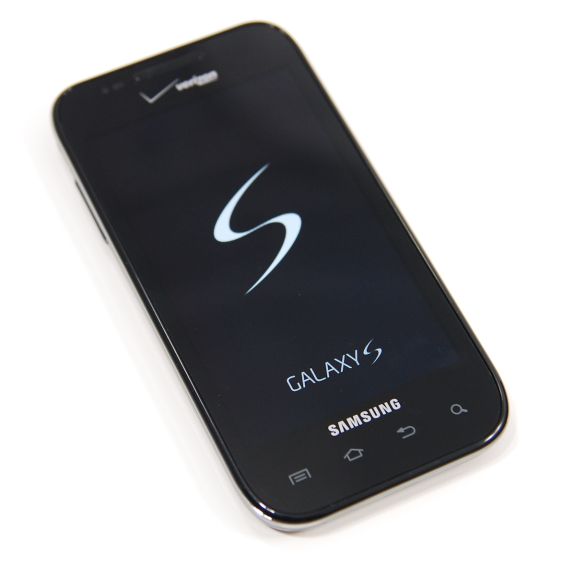
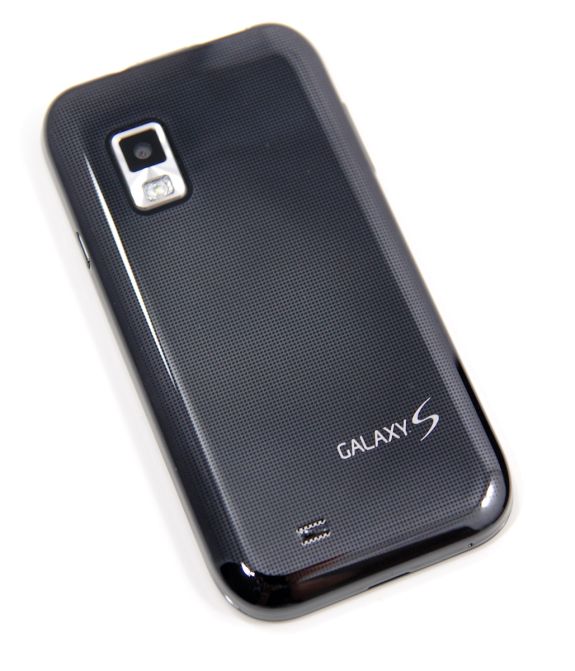
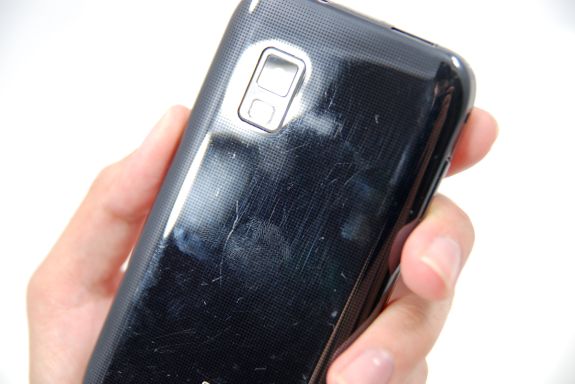

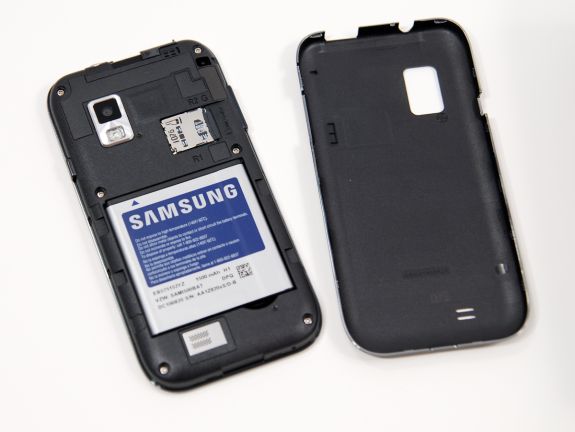




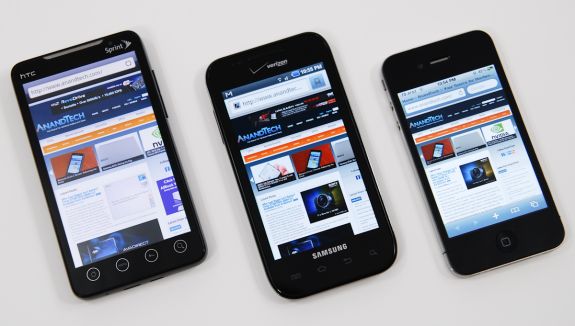
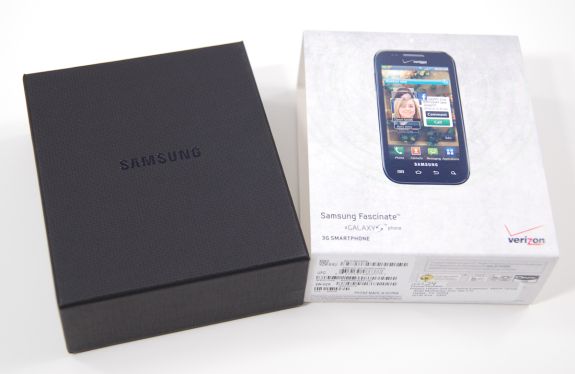








73 Comments
View All Comments
chemist1 - Tuesday, October 5, 2010 - link
kmmantey: Thanks for your comment. I agree audio quality does change with various factors. However, I would say that does not preclude it being of importance, nor being rateable. [ As softdrinkviking said below, one can do an "all things being equal" test.] Yes, various factors can degrade audio; but if you start with really good audio performance then, as you lose quality, at least you're losing from a higher starting point.I think saying "no one cares that much about call quality" is too strong. Granted, most may not care as much as me :). But, even in a mainstream publication like Consumer Reports, voice quality is listed as third among the 11 criteria they use in ranking smart phones (and I think CR has a pretty good bead on what its readership cares about).
More importantly, what should be important here is not what most care about, but rather what we, as presumably more informed and discriminating consumers ;), would find desirable. And I believe that many of us —perhaps even you!—would find a phone that provides significantly better audio quality more pleasing to use.
awaken688 - Wednesday, October 6, 2010 - link
I have to disagree Kmmatney. In fact, in the Droid 2 article I made a similar comment to Brian. For those of us with poor experiences with phones (using the phone part), making sure we get a strong quality phone for phone calls is very important. I want to know that in my car driving on the highway, I can hear someone clearly (is the volume level adequate). That if I am forced to turn it up to the highest volume, it doesn't have distortion. Things of that nature. I know Brian said he is working on it, so I will wait.Brian,
In the meantime, I'd still even appreciate a slightly unscientific test. Take the phone in your car on the same highway at a set speed. Call a recording (make sure it on par with an average human conversation, maybe even quieter to simulate a quiet speaker). Call a friend who can play a recording from a PC at a set volume/distance from a constant phone to simulate those loud and quiet talkers. I'm sure you will think of something. As long as you state it is a placeholder and unscientific, most of the people will completely understand. I'm sure you will have those 1 or 2 idiots post a comment complaining, but don't worry about them. There are many more of us who comment rarely and read daily.
MGSsancho - Tuesday, October 5, 2010 - link
set up your own cell site and connect to that? then make your own phone server with asterick and connect to that? thats a massive about of work dude or see if anyone have mad an app that can poll the codec info using the api? this guy made hos own cell site for 2G but might work on 3G http://www.tombom.co.uk/blog/ if you said you have played with cdma codecs then ill assume you know how to use asterisk lolthere are various ways but i think can think might be better. use a really good mic and take a recording from the sidewalk where you take video from and from other busy/common places, then use those audio files for testing. setup an audio chamber with a speaker playing those recordings. then use a directional mic really close to the speaker of the phone and do analysis on that. make the whole box out of foam so wireless signal doesn't get distorted. you can later intentionally weaker the wireless signal and record how the voice quality drops if you like. This way we can see what the phone sounds like at a club, classroom, sidewalk, store, high winds etc. too shorten this up, get controlled recordings, set up phones in a controlled box then use signal analysis on what comes out of the phones line-out/speaker.
Good Luck
Samoht - Tuesday, October 5, 2010 - link
This is really starting to worry me. Why do these carriers keep messing up good phones?I know that they are trying to differentiate themselves but crippling a product like this is not good business.
And this is on top of the skins from Samsung/HTC/SonyEricsson.
I really hope Google will realise that they need to raise the bar again and make a vanilla phone with gingerbread (tasty :-).
xype - Tuesday, October 5, 2010 - link
"Wait another 6 - 8 months, and you'll probably have something even better than both of these to choose from"So the iPhone _is_ coming to Verizon! :P
FATCamaro - Tuesday, October 5, 2010 - link
Haha. My thoughts exactly...strikeback03 - Tuesday, October 5, 2010 - link
Um, no, that would be something worse. 6-8 months should bring definite timeframes to LTE and A9 processor rollout, if not functional phones already.metafor - Tuesday, October 5, 2010 - link
"As some of our readers noted, the reason that Linpack performance on the Droid 2 isn't as high is simple - Scorpion has faster FPU performance due to a 128 bit SIMD FPU datapath compared to Cortex-A8's 64 bit implementation. Both FPUs process the same SIMD-style instructions, the Scorpion just happens to be able to do twice as much, or optionally turn off half the datapath to save power."That's unlikely the reason. NEON requires vectorized code which -- to my knowledge -- the Dalvik JIT doesn't do on-the-fly. Hell, even Intel's best efforts at auto-vectorization doesn't really cause huge improvements unless your data and loops were already formatted for SIMD operation.
That being said, we don't know how well Scorpion does on normal VFP instructions. It could be that there are some significant improvements over the standard A8 for those as well.
JimmiG - Tuesday, October 5, 2010 - link
Surprised about the rather poor battery life, as the device both has a bigger battery than the Nexus One and sports a 45nm custom SoC vs the older 65nm Snapdragon used in the N1 and others. I really expected the new generation of 45nm SoCs to excel in terms of battery life, especially after seeing the iPhone4 results. But it seems the iPhone4 battery life come down to software optimizations rather than more efficient hardware...This is something Google really needs to work on, since it seems to be a software issue. Before Android went mainstream, battery life of the iPhone (3G, 3GS) wasn't even considered that great. Now it's the gold standard for smart phones... Nearly all Android devices are in the same ballpark of around 4 hours or less of 3G browsing time, with the iPhone4 and even 3GS lasting several hours longer.
DroidUser - Tuesday, October 5, 2010 - link
I've got an i9000. The battery life issue is a major issue for me particularly during the weekends when I'm not sitting at my desk. Even compared to the original iPhone I had before the battery is poor in a couple of ways:2 hours regular web browsing uses about 80% battery life (its hard to tell from the icon). After this some features will not operate (e.g. camera and sometimes making calls). So its a lame-duck phone with <20% battery and in reality you'll be wanting to re-charge it after ~2 hours playing with it.
Re-charging it from empty takes (approx) 2.5 hours from the mains and 3.5 hours from my PCs USB port. My iPhone would re-charge from empty in about 45 min on the mains. That's a lot of extra time that my phone is out of action. The percentage of missed calls I have has gone way up.
I don't understand why AnandTech doesn't have a metric to measure charge time. Its probably the easiest of all tests!